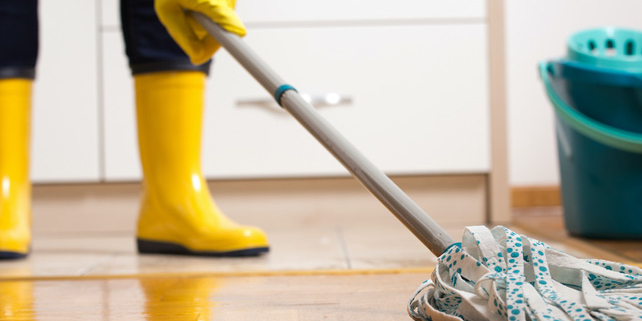The Essential Guide to Water Cleanup After Flooding
Flooding is a natural disaster that can cause extensive damage to homes, businesses, and communities. The aftermath of a flood involves not just repairing physical structures, but also dealing with water cleanup, which is crucial for health, safety, and restoring normalcy. This guide provides essential steps and tips for effective water cleanup after flooding.
Understanding the Impact of Flood Water
Floodwater can carry a multitude of contaminants, including sewage, chemicals, and debris. It can cause structural damage, ruin personal belongings, and create an environment conducive to mold growth. The cleanup process must be thorough to mitigate these risks.
Immediate Steps to Take
- Ensure Safety First
- Turn off Electricity: Before entering a flooded area, ensure the electricity is turned off to avoid the risk of electrocution.
- Wear Protective Gear: Use rubber boots, gloves, and masks to protect yourself from contaminants and mold spores.
- Assess the Damage
- Document Everything: Take photos and videos of the damage for insurance claims. Record details of the water level and the extent of damage to structures and belongings.
- Remove Standing Water
- Use Pumps and Wet/Dry Vacuums: Start removing standing water as soon as possible. If the water level is too high, use submersible pumps. For smaller areas, a wet/dry vacuum can be effective.
Detailed Cleanup Process
- Remove Damaged Materials
- Furniture and Personal Belongings: Move items to a dry, well-ventilated area. Discard anything that is severely damaged and cannot be salvaged.
- Drywall and Insulation: Cut away and dispose of wet drywall and insulation. These materials can retain water and foster mold growth.
- Clean and Disinfect
- Surface Cleaning: Clean all hard surfaces with soap and water. Follow up with a disinfectant to kill bacteria and prevent mold.
- Soft Materials: Wash textiles, such as curtains and clothing, in hot water. For carpets and upholstered furniture, consider professional cleaning or disposal if heavily contaminated.
- Dry the Area Thoroughly
- Ventilation: Open windows and doors to enhance air circulation. Use fans and dehumidifiers to speed up the drying process.
- Monitor Moisture Levels: Use moisture meters to ensure that all areas, especially hidden spaces like behind walls and under floors, are completely dry.
Preventing Mold Growth
Mold can begin to grow within 24-48 hours after flooding. Preventing mold growth is crucial for health and safety:
- Immediate Action: Begin the drying process as soon as it is safe to do so.
- Remove All Moisture: Ensure that all areas are thoroughly dried and dehumidified.
- Use Mold Inhibitors: Apply mold inhibitors to walls and other surfaces during the cleanup process.
Restoration and Repairs
Once the area is clean and dry, the focus shifts to restoration:
- Structural Repairs: Inspect and repair structural elements such as floors, walls, and foundations.
- Replacing Damaged Items: Replace drywall, insulation, and flooring materials as needed.
- Repainting and Refinishing: Once repairs are complete, repaint walls and refinish floors.
Working with Professionals
Depending on the extent of the damage, it may be beneficial to hire professionals:
- Water Damage Restoration Services: These experts have specialized equipment and expertise to handle extensive water damage and mold remediation.
- Contractors for Repairs: For significant structural repairs, licensed contractors can ensure that the work meets safety and building standards.
Insurance and Financial Assistance
Navigating insurance claims can be challenging:
- File Claims Promptly: Contact your insurance company as soon as possible to file a claim.
- Document Everything: Keep detailed records of all damage, repairs, and expenses.
- Seek Financial Assistance: Look into government and community assistance programs that can help cover the costs of cleanup and repairs.
Final Thoughts
Water cleanup after flooding is a daunting task, but with careful planning and prompt action, you can mitigate damage and begin the recovery process. Prioritize safety, thoroughness, and professional help when needed to restore your home or business to its pre-flood condition.
By following these guidelines, you can ensure a more efficient and effective cleanup, safeguarding your property and health in the aftermath of a flood.







Leave a Reply
Want to join the discussion?Feel free to contribute!